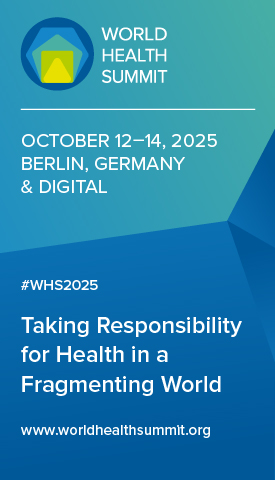Why C-TAP?
When Costa Rica found itself in the frustrating position of having the capacity to do more in response to Covid-19, but unable to move faster due to an inadequate supply of critical tools, it launched a global initiative that pools intellectual property – and saves lives
The Covid-19 pandemic revealed how fast modern scientific enterprise in the life sciences can respond to a global public health crisis to develop the tools necessary to manage such a crisis and save countless lives. However, this same crisis also revealed a severe inequity in global access to technologies that would have saved even more lives and enabled governments to manage the crisis better. A major cause of this access inequity was the synchronised global demand for Covid-19–related technologies, plus insufficient ramp-up in production capacity by the limited number of suppliers. Even countries with health systems that could effectively deploy such technologies did not receive deliveries in time to save more lives. As a result of this almost unique reason, Costa Rica – a middle-income country with a strong healthcare system – proposed the COVID Technology Access Pool (C-TAP) through the World Health Organization as a part of the solution to this ethical challenge.
Managing a health crisis caused by a deadly pathogen that is easily transmissible from person to person is no small feat. Speed is of the essence to minimise avoidable deaths and economic damage. An effective crisis response includes identifying and characterising the pathogen, understanding its natural history and life cycle, communicating timely and actionable information to the general population, diagnosing infected people and animals that can serve as host reservoirs, preventing infection and severe cases, protecting health workers and treating patients with proven therapeutics. In an ideal world, health authorities would have all the necessary tools in sufficient quantity and quality at their disposal.
floodgates of clinical research
For the first time in history, all the necessary tools for each of these actions were developed or were in production during the course of the pandemic. The SARS-CoV-2 virus was isolated and its genome was sequenced within weeks of the first case in Wuhan, China. Shortly after that, diagnostic kits were developed based on detection techniques. Dozens of labs in academia, government institutions, and the biotech and pharmaceutical industry raced to develop effective vaccines. The world witnessed the arrival and proof of principle of mRNA vaccine technology. In addition, the floodgates of clinical research opened, resulting in emergency authorisations for several new or repurposed drugs for Covid-19.
Some of these advances were so fast that they generated hesitation, such as the recurring question of whether vaccines are supposed to take longer to develop. The truth is that many of the platform technologies underlying these success stories had been in development for a decade prior to the pandemic, implying that the more time we have for science and technology to advance, the better prepared we should be for such crises. However, there is a caveat to this assertion: these essential tools must be truly available to health and government authorities, not just approved by regulatory bodies.
Most of these technological developments involve innovations and information protected through patents, data protection provisions and trade secrets. This reality limits the potential suppliers of the essential products to a handful of firms. The pricing policies, market prioritisation and logistical capabilities of these select firms significantly determine the equity among health system capabilities to manage a pandemic. The control of market conditions by firms during a period of exclusivity for a new drug, vaccine or other medical technology is nothing new. What has been fairly unusual in this pandemic is the reason behind the inequity in the access of Covid-19–related technologies: availability for delivery.
The issue of inequitable access to new medical innovations, particularly new drugs, often relates to pricing. When a new drug is launched, investors and management expect revenue and profits, expectations that result in pricing at the price point of maximum profitability. However, timely delivery to health systems or patients with the capacity to pay has usually not been the issue. But, in this pandemic, the global population had to be tested, vaccinated and potentially treated for Covid-19 because everyone was at risk of getting sick at the same time. This sudden and synchronised demand by billions of people overwhelmed the production and logistical capacity of even the largest firms. It is practically impossible to quickly produce billions of units of anything. This led suppliers of critical technologies to prioritise and stretch out deliveries. Some countries were left out as production capacity was completely committed to prior purchase orders. Many other countries found themselves in the frustrating situation of having the institutional, operational and financial capacity to do more, but unable to move faster due to an inadequate supply of critical tools. This was no minor issue. Speed means life in a pandemic.
Piecemeal deliveries
Costa Rica was in the latter category. The country had the political will, budget and operational capacity to do more, but had to adjust to piecemeal deliveries, or worse. This reality led Costa Rica to propose C-TAP through the WHO. The initiative was well received, as many member states signed on. On 29 May 2020, C-TAP was officially launched by the WHO and Costa Rica.
C-TAP is a vehicle through which rights holders can voluntarily license intellectual property into a pool for open use, with the intention of creating a freedom-to-operate commons that can accelerate innovation and expand the available supplier base of relevant technologies for the pandemic response. The Medicines Patent Pool, an organisation with the expertise and track record of negotiating voluntary licences to make drugs for specific diseases available in certain countries, was brought in to manage that aspect of C-TAP. So far, the parties contributing technologies to C-TAP have been primarily government laboratories, such as the announcement in May 2022 of an agreement between C-TAP and the National Institutes for Health in the United States for technologies applicable to the development of diagnostics, vaccines and therapeutics. This announcement is significant because NIH is the largest funder of biomedical research in the world.
C-TAP remains very relevant. The Covid-19 pandemic is not over, and the SARS-CoV-2 virus has demonstrated an impressive capacity to evolve. Science and technology, and the development of critical tools, must advance as fast as this evolving threat, and supply chains must be resilient enough to protect our species. C-TAP plays its role in both these needs. The final economic tally of the cost of this pandemic in terms of lives lost, disabilities and economic damage will certainly be in the many trillions of dollars. Never before has there been so much at stake in accelerating biomedical research and development, and in rolling out technologies in real time to meet the synchronised demand of the global population.












